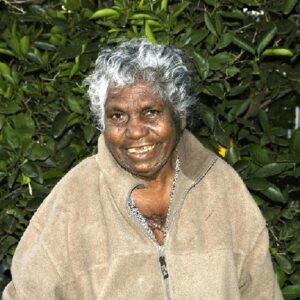
Gloria Petyarre
Utopia,
Gloria Petyarre, sometimes referred to as Gloria Pitjara, was one of Australia's most successful and significant female artists. Her depiction of the Kurrajong bush medicine leaves-with her layered, free-flowing, swirling brushstrokes that scatter across the canvas-became her iconic motif. Her career took off when she won the coveted 'Wynne Prize for Landscape' at the New South Wales Gallery in 1999. It was a triumph for Aboriginal art. Gloria became the first Indigenous Australian artist ever to win a major art prize at the Gallery of New South Wales. The painting was an extraordinary new artistic statement, quite unlike any other Aboriginal artwork at that time. A huge, gold and green abstract work, it was made up of swirling leaf shaped brush strokes positioned close together on a black background. It brilliantly captured the energy and flow of leaves being scattered by a fitful wind, seaweed swirling in a change of tide, or grass billowing in the wind. So much did this artwork fascinate the essentially nature-loving people of this country, that it was to become one of the most popular styles in Aboriginal art, bringing many a devotee to the genre because of its resonance with the viewer. Gloria continued to paint this style for the next 20 years until her retirement in 2019 due to health issues. During that time and subsequently, the style has been adopted and adapted by several generations of her family members. However, Gloria was and is credited with being the creator of this popular style and its most collectable proponent. Gloria's origins are in a region called Utopia, covering an area approximately 230 - 300km from Alice Springs, itself a remote town to many people. Many of Australia's foremost Indigenous artists spring from this area, including Gloria's renowned aunt, Emily Kame Kngwarreye, deceased since 1996, and the most famous and accomplished female Indigenous Artist Australia has produced. Gloria, her family members and her skin family, first became interested in art making by participating in the Utopia Women's Silk Batik Group introduced in 1977 and initiated by CAAMA (the Central Australian Aboriginal Media Association). Both Gloria and Emily were founding members of the group. With up to 80 members at a time, the Batik and Tie-die project became the seeding inspiration for the artists, and its tremendous success both in Australia and overseas led to another successful project introduced in 1988, again by CAAMA. This time, the artists were to paint on primed, stretched canvas, and many of the women took to the new medium with ease and enthusiasm, finding it more exciting to work with than the silk and batik techniques they had hitherto used.
The resulting works were exhibited at the S.H.Erwin Gallery in Sydney and several other notable galleries across Australia. It was the beginning of the Utopian Art Movement, and it was impressive enough to gain international attention. Gloria was one of the artists at the very centre of it. As demand for Utopian art grew, so did Gloria's career. She travelled with her art to many countries and exhibited in France, Germany, the United Kingdom, Belgium, the Netherlands, Italy, the USA and Japan, and of course in regional and commercial galleries throughout Australia.
It would be easy to think that Gloria's works were limited to bush medicine leaves works, so popular were they. In fact she had quite a number of Dreamings in her portfolio. She painted the 'Thorny Mountain Devil Lizard Dreaming', a pattern of swirling coloured lines which imitate the tracks made in the sand by the lizard's tail. Yam Dreaming, popularly executed by her aunt Emily, was also one of her commonly painted stories. She also painted Grass Seed, Pencil Yam, Emu, Bean, Small Brown Grass and Body Paint Dreamings. This breadth of subject matter and style has made her an extremely versatile artist. Later in her career, Gloria began to paint massive 'Big Leaf' paintings, expressionistically rendered with giant brush strokes that mix colour on the canvas to gain a variety of fascinating paint effects. The smile on her face while she painted these works revealed her delight in having a break from the finer styles that had occupied her previously.
Gloria was a multi-award winning artist and a highly collectible one. Her involvement in the founding projects of the Utopian Art Movement, and her status in the group have given her a place in Australian Art History - as well as a significant body of work. Apart from her Wynne Prize success, Gloria went on to be a finalist another four times. The most prestigious Indigenous art competition in this country, the 'Telstra National Aboriginal and Torres Strait Islander Art Award' has featured her artworks on many occasions, and her works are widely collected and commonly held in the finest Aboriginal Art Collections and Museums worldwide. Her list of artistic achievements is immense and her gift as an artist has touched many people - but it was her personal presence that left the greatest impact. The delight she took in meeting new people, unreservedly sharing the stories and songs of her Country are some of our most cherished memories of her. She was a woman of immeasurable generosity. Her beauty truly radiated from the inside out and manifested itself in her stunning artworks that are cherished by people around the world. She has travelled safely home to her Anmatyerre Country and her beautiful spirit will continue to radiate through her canvases. A friend sadly missed.
Gloria Petyarre's artworks
-
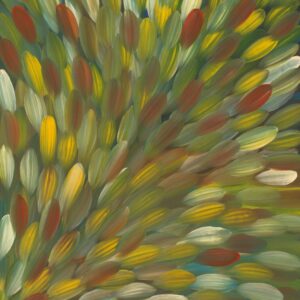
Gloria Petyarre
Utopia,Bush Medicine Leaves
YAA-341108 x 96 cmSold -
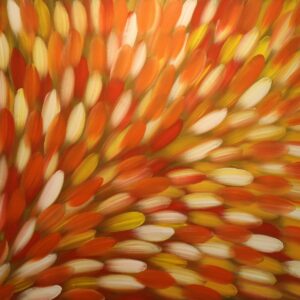
Gloria Petyarre
Utopia,Bush Medicine Leaves
YAA-29095 x 108 cmSold -
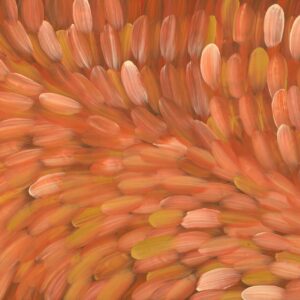
Gloria Petyarre
Utopia,Bush Medicine Leaves
YAA-340111 x 202 cmSold -
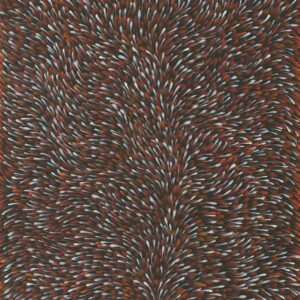
Gloria Petyarre
Utopia,Bush Medicine Leaves
YAA-143111 x 96 cmSold
WARNING: Aboriginal and Torres Strait Islander customers are warned that this page may contain images and of deceased persons.
